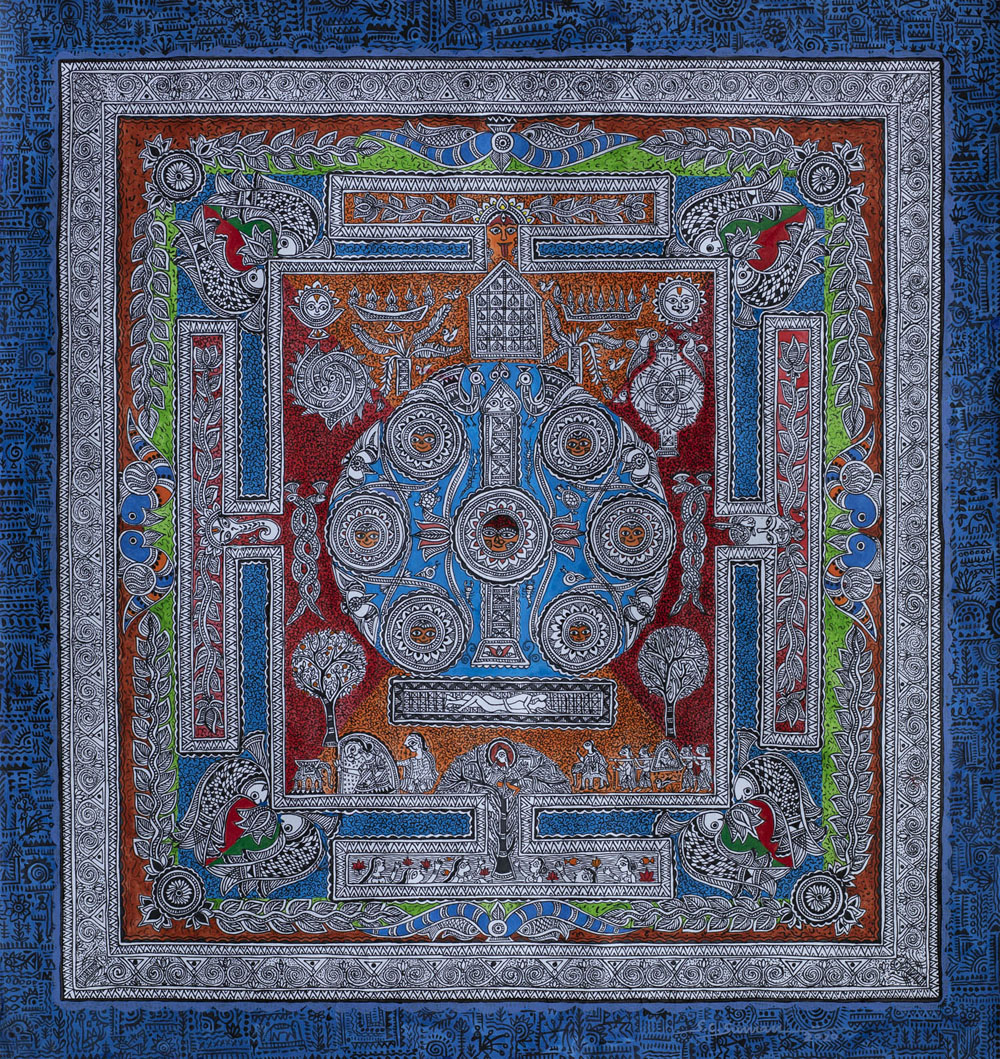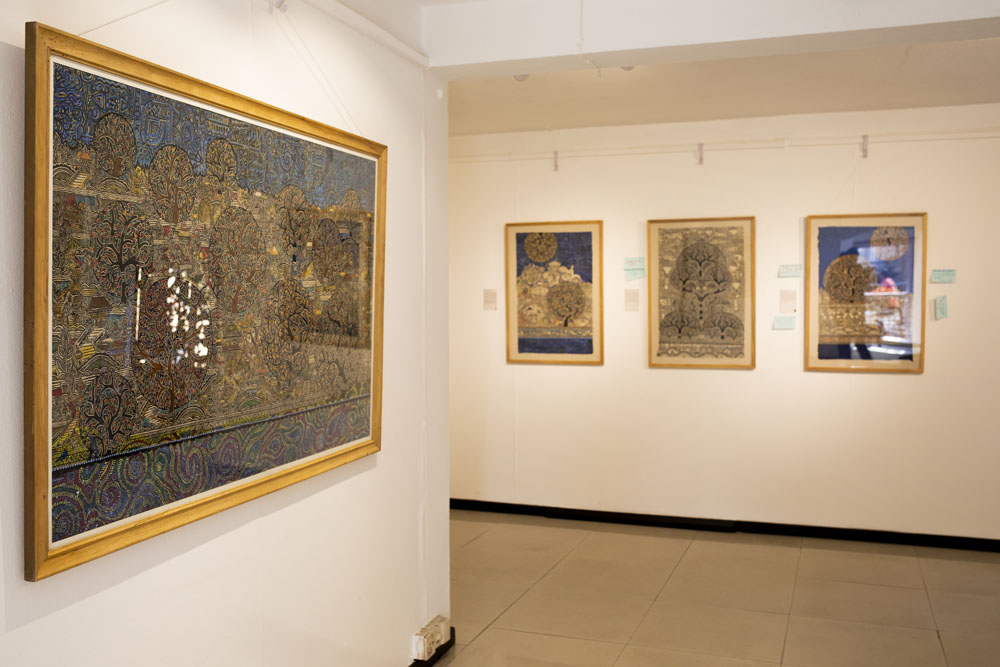Between an ancient past and anxious future

S C Suman’s 18th solo exhibition Mithila Cosmos: The Cycles of Time is the sixth in a series that juxtaposes traditional form and aesthetics with contemporary issues in Nepal.
Suman was the first Mithila artist to do a solo exhibition of this traditional artform of Nepal’s Madhes in 1991, and was recently awarded the International Lifetime Achievement Award by the 2021 Madhubani Literature Festival held at Darbhanga in India’s Bihar state.
“An artist is a social creature,” he tells us, “informed by the time and place around them.”
Indeed, since 2007, Suman has depicted the aftermath of the Maoist insurgency, the promulgation of the new Constitution, and the 2015 Earthquake in detailed paintings simultaneously rooted in Mithila traditions and style.
His latest is equally timely. Like a liminal deity, his brush looks both ways – at the ancient past and the anxious future – as the artist seeks to explore the tales of creation and analyse the effects of the Covid pandemic in a finesse of colours and intricate lines.

The Cycles of Time is first and foremost a story seeking balance, where the paintings are replete with familiar images of nature and Hindu deities. Snakes coil around branches as fish swim below. Vishnu and Laxmi sit atop the Seshnag as Brahma looks from above. Deer frolic behind leaves and kites take to the textured sky as gods and their creations try to co-exist in the great cosmic sphere.
The wide expressive eyes and delicate lattice-like line work flow, curve and bend at sharp angles to lead the viewer in the odyssey of Suman’s inspiration which begins at the footsteps of creation itself (Male female union and creation) and charts the progression of life through the four yug. “I as an artist wonder about how we got to this state,” says Suman. “And to answer this, I turn to look at where we used to be before.”


The cyclical four yug in Hindu cosmology – Satya Yug, Treta Yug, Dwapar Yug and Kali Yug – are described not just as the passages of time but of human morality and physical states as well, and SC Suman creates his own interpretations through changing colours and iconography. The use of warm golden hue is overwhelmed by cooler blue as we move from one age to the next, and harmony gives way to disorder.
By the time we come to the Kali Yug, the big fish gobble up the little ones as nature is decimated indiscriminately, and houses, people and cars try to climb on top of each other. Elsewhere, bats are scapegoated for the pandemic and oxygen cylinders hanging by parachutes try to make up for deforestation.

When he was a child in Lahan, SC Suman recalls, the East-West highway was just being built and forests were being cut to make room for the bitumen roads. “We would see sap coming from the cut trees and we would say that the trees are bleeding,” he recalls.
But not all is dark and foreboding. Progress and possibility for change is offered by the vibrant Ecological Balance and Love Rasa in Nature that call for stability and love that makes all things beautiful. Dashami Mela and Chhath Puja are joyous panoramas that capture the deep link between life, environment and the divine. Meanwhile, subtle sensuality and eroticism permeate Kobhar Painting and Naturally Intoxicated for Each Other in expressions of unity and duality.

Mithila Cosmos: The Cycles of Time is a uniquely introspective meditation on flux and the Anthropocene that asks the important question: What’s next? Any sense of nihilism is nullified by the underlying sense of eternal return, while these powerful images reflect our own intrinsic human proclivity to love, care and aspiration – offering us a second look at ourselves: perhaps we ourselves are the redeemer we seek to help us through the dark times.
Mithila Cosmos: The Cycles of Time
Siddhartha Art Gallery, Baber Mahal Revisited
Till 15 January
11:00am – 5:00pm
Special Talk ‘Mithila Gaze’: 7 December 3:00pm at the Gallery with Ramawatar Yadav, C K Lal, Sangeeta Thapa and S C Suman. Moderated by Devendra Thumkeli.
Read Also:
Vibrant Mithila art thrives in Nepal, Anita Bhetwal
writer




